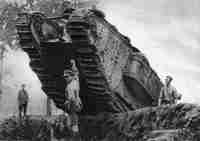|
|
|
Second Republic |
World War I and the political turbulence that was sweeping Europe in 1914 offered the Polish nation hopes for regaining independence.
Polish independence was eventually proclaimed on Nov. 3, 1918 and later confirmed by the Treaty of Versailles in 1919; the same treaty also gave Poland some territories annexed by German and Austrian during the partitions |
|
|
During the war, about 6 million Polish citizens were killed by Germans, and 2.5 million were deported to Germany for forced labour or to extermination camps such as Oswiecim Auschwitz . In 1941-1943 Ukrainian nationalists (OUN and Ukrainian Insurgent Army) massacred more than 100,000 Poles in Galicia and Volhynia. More than 500,000 Polish citizens were deported to the Soviet Union , many of them to concentration camps and labor camps ( Gulag ). |
|
| People's Republic of Poland |
The Constitution of the People's Republic of Poland was passed on 22 July 1952. Created by the Polish communists in the People's Republic of Poland , it superseded both the pre-war March Constitution and the post-war provisional Small Constitution of 1947 and was based on the 1936 Soviet Constitution (also known as Stalin Constitution). As in most other communist countries, the constitution was based on the 1936 Soviet Constitution and thus served mostly as a propaganda tool, failing to regulate the main source of power - the communist party. |
|
| Third Republic |
On August 19, President Jaruzelski asked journalist/Solidarity activist Tadeusz Mazowiecki to form a government; on September 12, the Sejm voted approval of Prime Minister Mazowiecki and his cabinet. For the first time in more than 40 years, Poland had a government led by noncommunists. |
|




